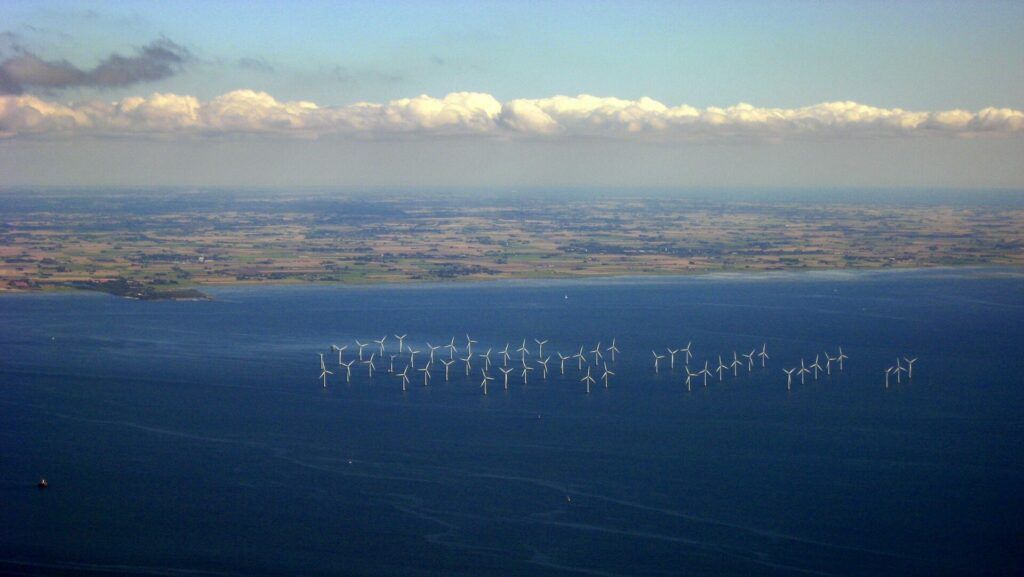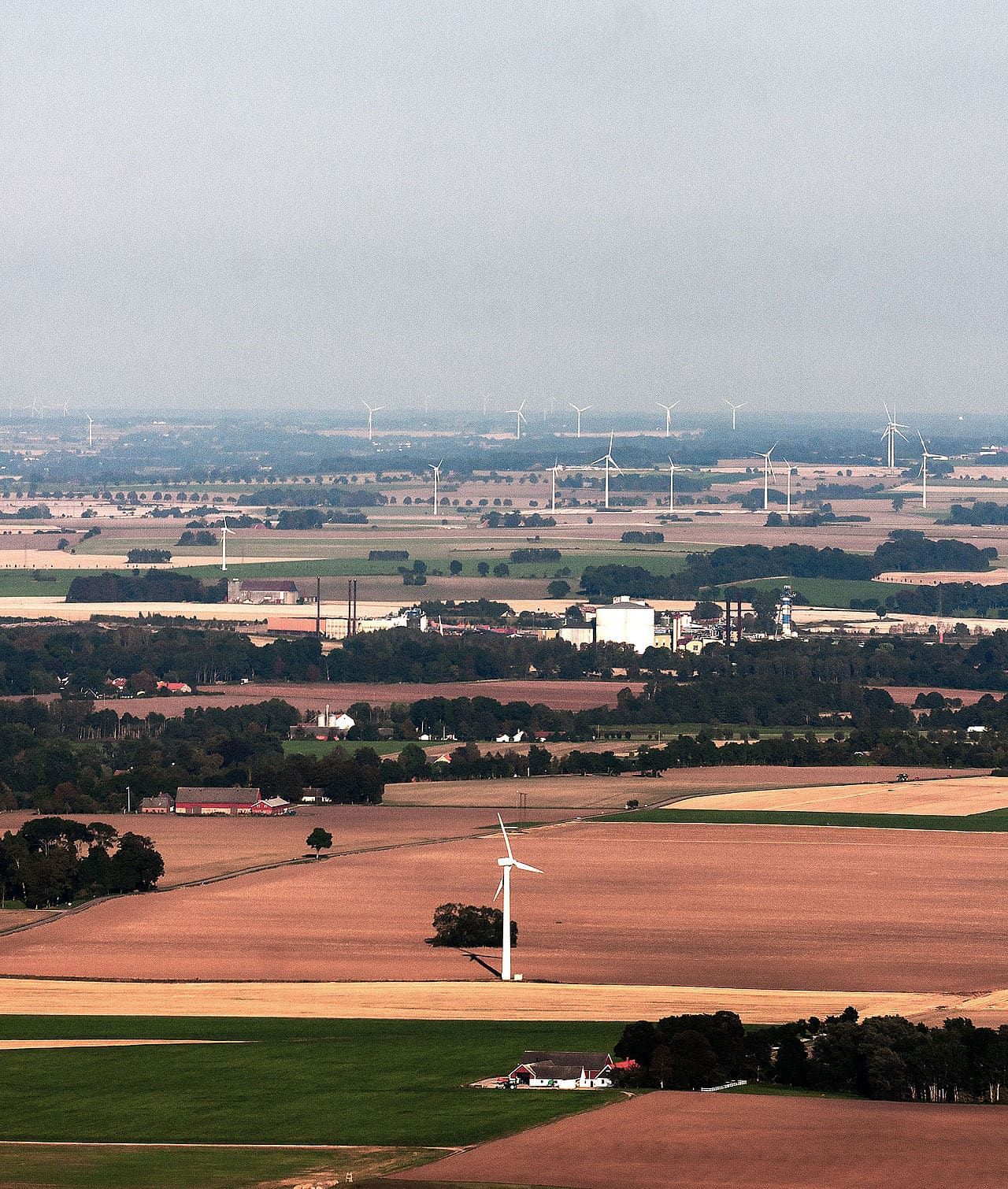An energetic exchange on the costs of decarbonizing Europe
By Amory B. Lovins, Robert Rosner, Sabrina Fields | May 26, 2022
 Lillgrund Wind Farm in Sweden (Photo by Tomasz Sienicki/Wikipedia, CC BY 3.0)
Lillgrund Wind Farm in Sweden (Photo by Tomasz Sienicki/Wikipedia, CC BY 3.0)
In the November 2021 issue of the Bulletin magazine, “How to make the renewables revolution a reality,” Robert Rosner and Sabrina Fields considered the cost competitiveness of nuclear energy in decarbonized grids. Their analysis drew in part on data published in 2014 or earlier. Since then, the cost of renewable energy has fallen significantly relative to nuclear, prompting Amory Lovins to write the following letter to the editor pointing out the pitfalls of judging new energy sources by old data.
Rosner and Fields respond in turn to say that the falling costs of wind and solar energy do not substantially alter their points about achieving an affordable, reliable, low-carbon energy mix.
Their lively and informative debate is printed in full below; Rosner and Fields’ original article for the magazine can be read here.
— Jessica McKenzie
Amory B. Lovins
Physicist Amory Lovins (1947– ) is Cofounder (1982) and Chairman Emeritus of RMI (formerly Rocky Mountain Institute) and its Chief Scientist... Read More
Robert Rosner
Robert Rosner is the William E. Wrather Distinguished Service Professor in the Departments of Astronomy & Astrophysics and Physics, and the... Read More
Sabrina Fields
Fields is a first-year MPP student at the Harris School of Public Policy at the University of Chicago. She works as a research assistant for... Read More
Amory Lovins
Adjunct Professor of Civil and Environmental Engineering, Stanford University
The global energy transition is a fast-moving target, and it’s impossible to know where it’s going if you don’t know where it’s been.
In a November 2021 Bulletin article, “Is nuclear power sustainable in a carbon-free world? The case of Sweden,” Robert Rosner and Sabrina Fields helpfully unpack some of the complexities of Swedish policy that distort electricity prices. Even more valuably, their article illustrates why dynamic variables mustn’t be treated as static. Old data beget bad comparisons.
Without policy instruments—and if Swedish new nuclear power, onshore wind power, and hydropower all pay the same 6 percent annual cost of financial capital—Rosner and Fields find their electricity costs all fall in a narrow band. The authors find nuclear power is “highly competitive” and “extremely competitive” with other low-carbon power sources, or at least offers a “competitive advantage”; or, in contrast, is only the third-cheapest option—or the fourth-cheapest (tied with offshore wind) if nuclear financing costs a more realistic 10 percent. But these comparisons are all based on a 2014 report that doesn’t assess future potential. Since then, renewable energy costs have plummeted.
Between 2012–13, when the authors’ cost data were collected, and 2021, when their article was published, how did renewables’ unsubsidized, inflation-adjusted, global benchmark costs behave? According to the December 2021 subscriber database of Bloomberg New Energy Finance, based on more than 24,000 actual projects worldwide, real cost fell 71–72 percent for solar photovoltaics, 52 percent for onshore and 65 percent for offshore wind power, and 82 percent for utility-scale batteries. Bloomberg reports that “Between 2009 and 2018, the cost of new nuclear projects rose 23 percent, according to the World Nuclear Industry Status Report 2019. In the same period, utility-scale solar costs fell 88 percent, and the cost of wind energy dropped 69 percent.”
Renewable costs are expected to continue to trend downward—by another 36–39 percent in 2021–30 for Swedish onshore windpower, according to Bloomberg New Energy Finance. The small cost differences between renewable and nuclear power that Rosner and Fields found in 2021 using 2012–13 data were smaller than the overlooked renewable cost drops that thereafter occurred every year or two. Conversely, nuclear power’s costs rose by 36 percent in 2009–21. Though modern reactors haven’t exhibited a “learning curve,” and proposed new types seem unlikely to produce cheaper power, the International Energy Agency does forecast a 7 percent nuclear cost drop during 2020–40, from $99 to $92 per megawatt hour—dwarfed by drops to $40 for onshore wind, $35 for offshore wind, and $19 for solar.
Just weeks after Rosner and Fields’s article was published, the source of their data—an industry consortium called Energiforsk (previously Elforsk)—released an update. It shows Swedish utility-scale solar power and onshore wind power costing about half as much as nuclear power, not about the same. This new comparison has been criticized by Swedish experts for unrealistically low nuclear costs from Dr. Staffan Qvist, who assumed, for example, half the 10-year global-average nuclear construction time and half the typical cost of nuclear capital. But the 2021 report’s renewable costs, from other authors, do seem broadly consistent with independent Swedish data.
Energiforsk shows unsubsidized utility-scale solar power as 55 percent costlier than nuclear power in 2014 but 23 percent cheaper than nuclear power in 2021. Offshore wind power fell from 25 percent costlier to 5 percent cheaper, and in 2019–21 (per Energiforsk) roughly tied with the lower end of nuclear power’s range, but its actual auction prices in adjacent Danish waters fell by more than half. Offshore wind power is evolving so quickly that most auctions are now unsubsidized or negatively subsidized (“pay to play”); nearly 7 gigawatts of new capacity cleared global auctions just in the first quarter of 2021. In February 2022, Sweden announced plans to add 120 terawatt-hours per year or approximately 27 gigawatts of offshore wind power—2.6 times Sweden’s 2020 nuclear output, or nearly the entire national electricity consumption of roughly 140 terawatt-hours per year. That doesn’t yet include floating turbines, of which 15 gigawatts were just bid in one project offshore Scotland, implying solid competitiveness (though not without siting controversy). Swedish nuclear ambitions thus look outdated.
To be sure, Energiforsk’s 2021 comparison doesn’t quantify “system aspects,” notably the cost of reliably integrating generating technologies into the grid. Many analysts assert that variable renewables (solar photovoltaics and wind power) cost more to integrate than big nuclear or fossil-fueled power stations, making those renewables costlier than they look in isolation. But that view seems inconsistent with observed market data. Why? Because those big thermal plants’ unforecast failures (“forced outages”) are generally bigger, longer, more abrupt, and far less predictable than variable renewables’ outages, and thus need more reserve margin, spinning reserve, and cycling and part-loading (which reduce plant life and raise maintenance costs). Surprisingly, east Danish wind operators can now forecast their output precisely enough to bid into the day-ahead hourly auctions, because they’re more confident they can deliver the contracted power on time than the grid operators are that when they press the Start button, their gas-turbine peaking generator will actually start. Of course, system comparisons are complex, and integration costs may be lower in the hydro-rich Nordic grid. But they’re overstated by many common simulation models (probably including Energiforsk’s) that omit most of the 10 available carbon-free classes of grid-balancing resources.
Two small details also deserve clarification. The authors say that nuclear power’s higher cost than hydro or wind power is “compensated by the substantially greater nuclear power capacity factor.” However, capacity factor is already accounted for in their energy cost comparisons and should be counted just once. They also compare 2020 Danish with Swedish household electricity prices, but those Danish prices are largely taxes. Average wholesale electricity prices in Denmark, which has no nuclear power and was 79 percent renewably powered in 2020, are consistently lower than Sweden’s.
Sweden will have a closely contested general election in September 2022. The powerful nuclear lobby is fighting to restore its troubled technology. Putin’s War adds a volatile element of energy security to longstanding climate and economic debates. Swedish advocates are vigorously promoting analyses favoring nuclear power, which skeptics robustly debunk. Caution is warranted. But it should be common ground that when key variables are in rapid flux, sound analysis must stay current, in order to (as hockey great Wayne Gretzky said) “skate where the puck is going to be.”
Robert Rosner and Sabrina Fields
University of Chicago /
Harris School of Public Policy
We very much enjoy responding to our colleague Amory Lovin’s comments on our earlier article describing Sweden’s energy mix for electricity generation.
Lovins is quite correct in describing our picture of the Swedish electricity market as a snapshot—as it indeed is. And it is quite correct that to assess how electricity markets will evolve, one needs to take into account the highly dynamic technical evolution of energy generation, especially as it regards renewables such as wind and solar power. But we fear that he may have misjudged our intentions: We were not arguing that the Swedish conditions are a model for how energy markets (such as the ones in the United States) should be structured. Our goal was far more modest, namely to demonstrate by explicit example that it is possible to construct a mix of energy generation technologies that successfully completely decarbonize the production of electricity, and to do so for the long haul (i.e., Sweden has had a decarbonized electricity sector for decades) and at reasonable retail electricity costs, i.e., rates that are not out of line with rates experienced by retail consumers in markets that are dominated by fossil-fueled electricity generation. In other words, our intention was (and remains) to provide an “existence proof” that a national electricity sector can be completely decarbonized while maintaining highly reliable service and without causing traumatic economic stresses.
As for specifics, Lovins offers some speculations about how Sweden’s energy mix might evolve, focusing virtually exclusively on the sharply lowered costs of energy generation by wind and solar technologies. While we fully agree with him about the remarkable decrease in generation costs by wind and solar, we fear that Lovins appears to be a bit reluctant to discuss the details of exactly what transitioning to a largely renewable power-dominated electricity will really cost. That is, while it is surely correct that the steep drop in generating costs by solar and wind technologies will influence (and benefit) that evolution, there are constraints other than just generating costs that influence how utilities evolve their energy generation mix, including the demands imposed by efficient and effective dispatching, the requirements imposed by assuring continuous operations and electricity supply, and finally the social acceptance and behavioral changes that moving to a truly carbon-free energy system entails. And once one takes into account these complexities of the ongoing decarbonization transition, it turns out that electricity retail customers do see increased retail electricity costs.
All these issues are discussed in great detail in a 2021 study carried out by Nordic Energy Research for the Nordic countries (Finland, Norway and Sweden), with a time horizon of 2050. This careful, quantitative study makes the case that, for a variety of scenarios—ranging from one that minimizes the transition costs to one that positions the Nordic countries as significant electricity exporters to the rest of Europe—the Nordic group’s generation capacity would be dominated by a mix of hydro, wind, nuclear, solar and biofuels. They predict that the largest changes on electricity demand and in generation in the period leading up to 2050 would be the total decarbonization (and consequent electrification) of transport and a huge increase in wind power (generated both on land and off-shore), respectively; this would make hydro and wind by far the largest contributors to electricity generation in the Nordic countries, with wind actually substantially dominating hydro in the most ambitious scenario (in which these three countries become significant exporters of electricity).
What is particularly striking in these scenarios is that their dispatching modeling shows that the inevitable fluctuations in generation due to renewables can be effectively dealt with without resort to grid-scale energy storage, namely via the combination of the existing fully dispatchable generation sources—mostly hydro, nuclear and biofuels—which allow for some degree of ramping; this is especially true for biofuels, which are thus seen by these authors as an essential tool dealing with fluctuations in renewable energy generation. Finally, they demonstrate explicitly that the required evolution in generation technologies can occur without drastic changes in retail energy costs: costs will increase slightly, but not as dramatically as has already occurred in other venues.
Which gets us to Lovin’s critique that we unfairly compared energy prices in Sweden and Denmark, asserting that we ignored the distorting effects of the relatively high tax rates in Denmark. Actually, we were particularly interested in the electricity costs presented to retail consumers, including taxes and fees. The reason it is useful to examine the details of the retail electricity costs experienced by consumers is that they contain, in addition to the costs of electricity generation (i.e., what the utilities pays for the generated electricity—costs that do reflect the wholesale price of electricity that Lovins refers to) and the costs of electricity transmission and distribution, a wide variety of fees and taxes. And it is these fees and taxes, which can actually more than double the retail electricity costs, that can in part reflect the costs of implementing decarbonization, which the wholesale electricity prices do not reflect. This is where the Swedish electricity market differs from those elsewhere: As we discussed in our article, Sweden eliminated the explicit tax on nuclear-generated power (this was one of the “policy instruments” we discussed in some detail). In other European countries, the situation is more complex.
Germany is a useful example. In our previous article, we noted that country has extraordinary retail energy costs (32.16 Euro cents per kilowatt hour) and vastly increased renewable energy generation. Germany also imposes electricity taxes that explicitly relate to the energy transition. Three fees are included in this tax: a “renewable energy surcharge” (6.5 Euro cents per kilowatt hour, or 20 percent of the total retail cost), an “offshore liability levy,” which operators pass on to consumers (0.4 Euro cents per kilowatt hour, or 0.03 percent), and a “surcharge for combined heat and power plants”—all fossil fuel-based (0.25 Euro cents per kilowatt hour, or 0.08 percent).
The transition to renewables is forcing a significant restructuring of Germany’s electricity grid, principally because its current grid was not designed to carry large amounts of power from the north (where much of Germany’s wind power is generated) to the south (where much of its energy consumption takes place). While the existing grid has been fully amortized (so that electricity transport charges have largely been based on operating and maintaining the already-existing grid infrastructure), paying off the capital construction costs from grid restructuring leads to additional costs for retail customers. As a result, at least one third of the retail electricity costs in Germany are basically a combination of subsidies to renewables, added fees on fossil fuel-based generation, and added transmission costs due to grid restructuring. In other words, they are part of the costs of transitioning to renewable power.
As for the politics: The new German coalition government elected in 2021 came into office with plans that explicitly addressed the high electricity costs; in particular, the coalition plan will seek to “reliev[e] electricity consumers by no longer having the billion-euro renewable energy surcharge financed on electricity bills.” If higher electricity bills would not be used to pay for the required costs of transiting to renewables, those funds will need to be found elsewhere in the government’s annual budget. That does not mean that these additional costs don’t exist, just that it will be much more difficult to explicitly tie specific sources of government income (taxes and fees) to the expenditures funding the energy transition.
Which brings us to the Danish case. The first point to make is that Lovin’s comment about Denmark’s taxes on electricity is quite on the mark: For example, the total electricity price in the second quarter of 2021 was 256.41 øre per kilowatt hour (about 37 US cents), of which 21 US cents per kilowatt hour (56.9 percent) is attributable to taxes and fees. This tax burden can be further broken down into an “electricity tax” (13 US cents per kilowatt hour), transmission and system tariffs (about 2 US cents per kilowatt hour), an explicit subsidy fee/tax for renewables (a modest 1.1 US cents per kilowatt hour), and finally the value added tax.
It is particularly interesting that Denmark is explicit about not using electricity taxes or fees as a primary tool to encourage decarbonization. Instead, the policy instruments used to drive decarbonization are largely subsidies. In other words, the explicit tax supporting a renewable subsidy mentions above is actually not the primary fiscal tool used by Denmark to steer electricity decarbonization. Similar to the proposal by the new German government, the dominant costs of the decarbonization transition (including the subsidies) are funded through national tax revenues, and so cannot be directly linked to the current electricity retail prices paid by individual consumers. We leave it to the reader to deduce what the political motivation might be to disassociate the costs of the decarbonization energy transition from retail electricity costs.
Finally, some comments about nuclear power. It is certainly true that Sweden is currently benefiting from the fact that their current nuclear generation capacity is largely already amortized, e.g., Swedish consumers are no longer paying much (if at all) for the capital construction costs of these power plants. They are also benefiting from the high capacity factor of these plants, a factor that does matter in the economics of electricity generation, and which Lovins does not take into account when comparing wind and solar generation costs with current nuclear power generation costs in Sweden. That is, he is correct that the capacity factor for various generating technologies is taken into account when computing (for example) the levelized cost of electricity; but those costs don’t account for the system-level costs imposed by the low capacity factors for renewables, and these are the costs we were referring to in our article.
New construction—especially for gigawatt-scale plants—is currently quite expensive, as Finland has discovered recently. Whether the Nordic countries continue to use nuclear power after the existing plants reach their nominal service life will depend on the future construction costs of nuclear power plants, and exactly what these will be is unknown. This is indeed the conclusion of the aforementioned Nordic Energy Research study of the Nordic nations’ energy future.
All this leads us to ask what conclusions may be drawn? First, it is a very smart idea to start “greening” one’s electricity generation early. That is a clear message that the Swedish example is sending us. The Swedes have been doing this for decades—and they did not need to resort to additional tax revenues (explicit or hidden) to fund this transition. Second, if a country is set on decarbonizing electricity generation now, with (reasonable) targets for complete decarbonization by, say, 2050, the sharply lowered costs of solar and wind power generation seen over the past decade will ameliorate, but not eliminate, the fact that total electricity costs will rise substantially as the network is decarbonized. The reason is an obvious one: The shorter the amortization period for paying the inevitable transition costs, the higher the retail electricity costs will be. So, given that decarbonization of the electricity sector is widely agreed to be inevitable, delaying that transition is a recipe for increasing retail electricity costs, and the longer one waits, the more expensive it will be. The only remaining question is then how transparent this process of paying for the energy transition will be.
Amory B. Lovins
Physicist Amory Lovins (1947– ) is Cofounder (1982) and Chairman Emeritus of RMI (formerly Rocky Mountain Institute) and its Chief Scientist... Read More
Robert Rosner
Robert Rosner is the William E. Wrather Distinguished Service Professor in the Departments of Astronomy & Astrophysics and Physics, and the... Read More
Sabrina Fields
Fields is a first-year MPP student at the Harris School of Public Policy at the University of Chicago. She works as a research assistant for... Read More
Together, we make the world safer.
The Bulletin elevates expert voices above the noise. But as an independent nonprofit organization, our operations depend on the support of readers like you. Help us continue to deliver quality journalism that holds leaders accountable. Your support of our work at any level is important. In return, we promise our coverage will be understandable, influential, vigilant, solution-oriented, and fair-minded. Together we can make a difference.
Keywords: Sweden, climate change, decarbonization, low-carbon energy, nuclear deterrence, nuclear energy, nuclear risk, nuclear security
Topics: Climate Change, Nuclear Energy
Share: [addthis tool="addthis_inline_share_toolbox"]














